James Griffin, Dr. Peter Baek, Dr. Stacey Boland
If there ever was a time for ingenuity and teamwork, the COVID-19 pandemic has been it. The stress on health care providers and facilities treating patients has been especially daunting and gut-wrenching. University of Texas at Dallas alumni stepped up to help early in the crisis, using their time and talents to provide solutions during one of the nation’s most difficult challenges.
In the early spring of 2020 — and the early days of the pandemic — two UT Dallas alumni designed and manufactured a valve attachment that can convert a snorkel mask into safety gear for health care workers in the event of a shortage of personal protective equipment (PPE).
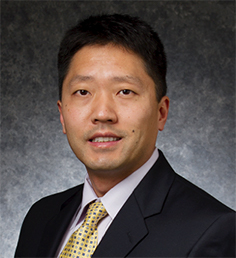
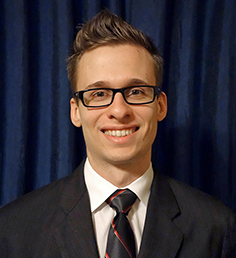
James Griffin BS’18, CEO and founder of the health care software company Invene, worked with Plano, Texas, anesthesiologist Dr. Peter Baek MS’15 to create the adapter that connects a hospital-grade bacterial and antiviral filter to a full-face snorkel mask. The adapter can be sanitized to use again with a new filter. The masks have to be purchased separately. Similar efforts were carried out across the country.
The pair partnered with the University’s UTDesign Studio and Emerson Automation Solutions in McKinney, Texas, to 3D-print the attachment at cost. Each part costs less than $10 to manufacture.
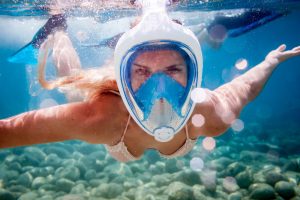
“Basically, we added a valve to a scuba mask,” said Griffin, who earned his computer science degree from the Erik Jonsson School of Engineering and Computer Science. “We’re using filters already proven to stop viruses. The resulting mask actually replicates the functionality of an N95 mask. It’s free — we just wanted to help doctors.”
Griffin and Baek distributed about 300 of the attachments to health care workers in the early months of the pandemic.
After reading about similar solutions used by Italian physicians, Baek, who earned a degree in healthcare leadership and management from the Naveen Jindal School of Management, contacted Griffin. The two had worked together through the University’s Venture Development Center, a business incubator that helped Griffin launch his company. Baek has experience mobilizing medical equipment under challenging circumstances. In 2005 he served as medical director of an Air Force expeditionary hospital at Baghdad International Airport.
Griffin, who received an OZY Genius Award in 2018, said he drew upon what he learned about entrepreneurship as a student at UT Dallas to develop, manufacture and distribute the valve rapidly.
“I started looking around to see if there are other ways that we as health care professionals can protect ourselves,” Baek said. “I contacted James and said I needed to 3D-print an idea as proof of concept. Let’s see what we can do and work together.”
–Kim Horner
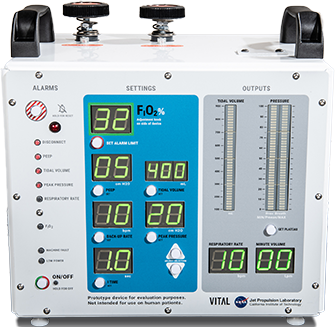
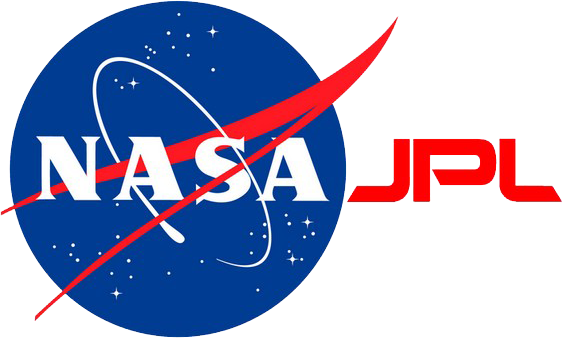
UT Dallas alumna Dr. Stacey Boland BS’00 is part of a team of dozens of NASA engineers that in just 37 days developed a new high-pressure ventilator. The device, called VITAL (Ventilator Intervention Technology Accessible Locally), was developed in spring 2020 at NASA’s Jet Propulsion Laboratory (JPL) in California to free up the nation’s limited supply of traditional ventilators so they could be used on patients with the most severe COVID-19 symptoms.
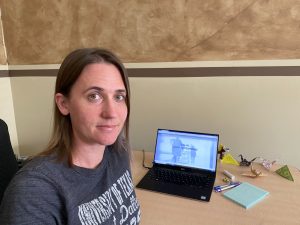
The prototype, designed for rapid mass production, was tested at the Icahn School of Medicine at Mount Sinai in New York City and in late April 2020 received Food and Drug Administration approval for emergency use. VITAL can be built faster and maintained more easily than a traditional ventilator, and its flexible design means it also can be modified for use in field hospitals, according to NASA. In late May 2020, eight U.S. manufacturers were chosen to make the device.
Boland, a systems engineer at JPL since 2005, was the operations lead for VITAL. She was responsible for liaising with health care professionals to ensure their needs were met and that they could easily operate the ventilator. She also wrote the instruction manual on the fly.
“On any given day, I’d be talking to doctors, nurses, respiratory therapists, mechanical engineers, electrical engineers, software engineers, project managers, our regulatory team and visual strategists, communicating across and translating between all of these different disciplines to keep us on the same page — all while working remotely,” Boland said. “It was an intense and amazing experience.”
Boland earned her physics degree from UT Dallas and her Master of Science and PhD in mechanical engineering from the California Institute of Technology. She currently is part of a team developing NASA’s Multi-Angle Imager for Aerosols (MAIA) instrument, which will characterize particulate matter in air pollution.
–Amanda Siegfried